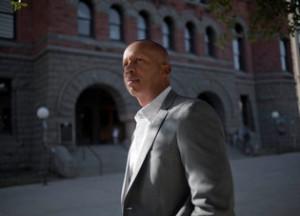Among states, Louisiana was the epicenter of America’s dark era of lynchings; but more people were lynched in Phillips County, Arkansas, than in any other American county. The Deep South’s lynching body count is mapped here.
Lynchings were employed as a form of social control to keep blacks in their place in the segregated South, so they were public affairs. Historians and researchers have documented 3,959 victims of racial terrorism in 12 southern states between 1877 and 1950, defined as incidents of premeditated violence by three or more persons who claimed to be enforcing a kind of social justice. While some of the lynching victims were blamed for crimes like murder and rape, blacks also were lynched for “social offenses” like testifying in court or whistling at a white woman (e.g., Emmett Till).
Now, a group calling itself the Equal Justice Initiative, based in Montgomery, Alabama, wants to erect markers and memorials at lynching sites across the South. The group has already raised funds and built markers at some slave market sites. These efforts have often met with local resistance.
Writing for the New York Times, journalist Campbell Robertson says, “The city and state governments were not welcoming of the markers despite the abundance of Civil War and civil-rights movement memorials in Montgomery. … Around the country, there are only a few markers at the sites of lynchings.” It seems that for many folks, it’s fine to lionize Confederate generals and soldiers, but the KKK’s victims don’t deserve equal billing.
The  carried Robertson’s piece in its Sunday edition this week.
carried Robertson’s piece in its Sunday edition this week.
Photo: Bryan Stevenson founded and heads the Equal Justice Initiative, which is working to build memorial markers to the South’s lynching victims.